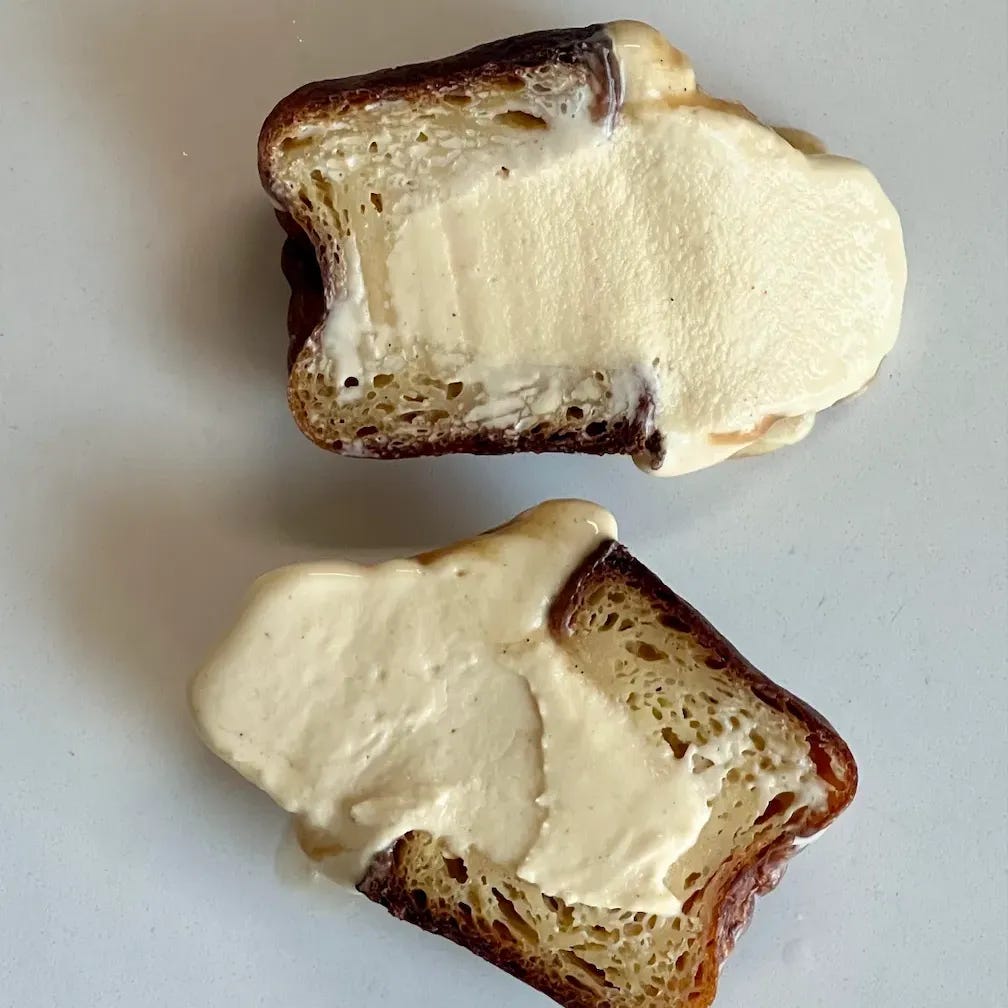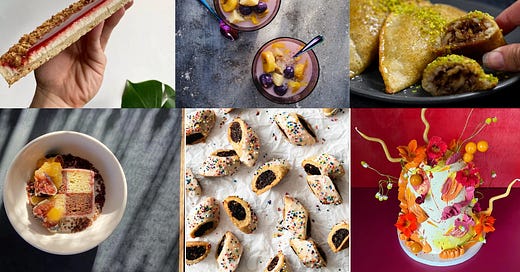We need climate cuisine now more than ever
Plus, must-make sustainable Thanksgiving desserts
Baking buds, I’m writing you a slightly unusual letter today. In the wake of the U.S. Presidential election two weeks ago, I want to zoom out from our dessert-snarfing day-to-day and talk about the why behind this climate-friendly baking newsletter.
My north star has always been a food system that contributes far less to climate change, is climate-resilient, prioritizes the health of eaters and farmworkers, and preserves food sovereignty and threatened food cultures. All signs from the first Trump presidency indicate that his second term will throw up major roadblocks in front of each of those goals.
So as we face four years where federal policy is all but assured to fade away as a meaningful lever for sustainable food systems change in the U.S., another lever becomes that much more important: Culture. And the creation of a sustainable food culture is what we’re working to do in this newsletter, one canelé conelé and perennial butterscotch bar at a time.

My career choices over the past few years — to up and move to France for a year to go to pastry school, to report on climate cuisine, to begin plotting an eventual regenerative baking cookbook — have been predicated on a hunch that if sustainable eating becomes culturally popular on a wide scale, it can pave an easier path for transformative policies and business investments, on top of creating big environmental benefits through individual actions.
It starts with taste. Completely unsurprisingly, taste is a far more important factor for most people than sustainability when they make choices about what to eat. So I’ve always felt that to become a real force for change, climate cuisine needs a crazy-high culinary bar, where flavor is first and sustainability is just the cherry on top.

That’s why a big part of my backend work for this newsletter is a treasure hunt. I’m constantly scoping out bakery menus, new cookbooks, and Instagram for the most tantalizing treats that are also sustainable, like Lapita Sherbert’s sweet-and-sour-plum sherbert made with low-carbon soy milk, Beth Dooley’s chocolate butterscotch bar that’s made even butterscotch-ier because perennial Kernza flour comes by that flavor naturally, and @fremecraiche’s waste-not, canelé-flavored ice cream. I’m slowly getting a sense of the field of bakers and pastry chefs who are baking in these various sustainable ways; and I republish their recipes in tandem with interviews and stories as often as I can manage.
My hope is that any recipe I share here is a two-fer: A guide for those of us who already care deeply about the climate and want to bring that care into our cooking habits, and the kind of thing that, if pictured on the front of a collaborative climate cookbook or brought to a holiday party, could draw in a broader set of foodies and begin to change their eating habits by the power of dessert glam alone.
Cultural change starts from the pie plate up. And it starts anytime we have a chance to gather and share a climate-friendly treat. Just bake, slice, and — when inevitably asked to share the recipe — pass it on.
Start with a climate-friendly Thanksgiving dessert
I don’t know about you, but for Thanksgiving this year, I’ll be making Mary-Frances Heck’s fig and caramel nut tart. It’s as inspiring a reason as any I know to use up the gravely bits of walnuts and almonds that are perennially stashed in my freezer, instead of pitching them and adding to landfill emissions. By that same logic: If you have heavy cream that’s on its last legs, make Cassie Best’s clementine possets with cranberry compote. If you have a pumpkin that needs using, make Paris Starn’s sticky toffee pudding cake inside a pumpkin.
For a naturally plant-based pumpkin treat, make these air-fried pumpkin sesame mochi balls from the blog Herman At Home — they’re bite-sized studies in crisp-chewy contrast. And if you’re like me and believe that pies are better if they have strong tart energy, make Philip Khoury’s plant-based, sweet-potato-iest pie, which even uses sweet potato in the pastry dough and is crowned with filo leaves as delicate as the few still clinging to the trees in Brooklyn.






YES TO A REGENERATIVE BAKING COOKBOOK! As a food grower myself, this newsletter brings me so much joy to see the intersection between food and climate <3
Thank you so very much for sharing your 'why'! I love reading others' stories and their paths to working to improve the planet. I also love sharing them! Any chance you would consider speaking (virtually) to our group of AmeriCorps folks sometime about your journey? I know they'd be fascinated!